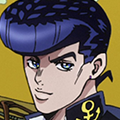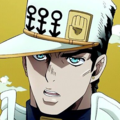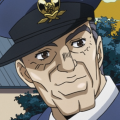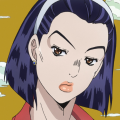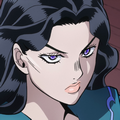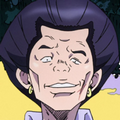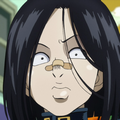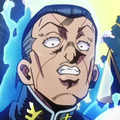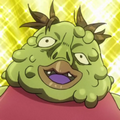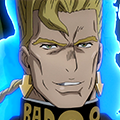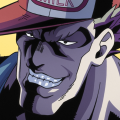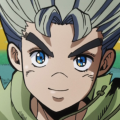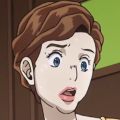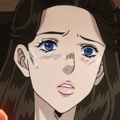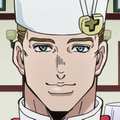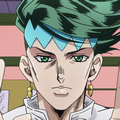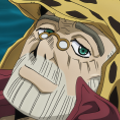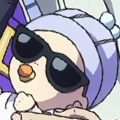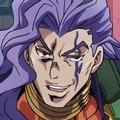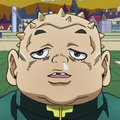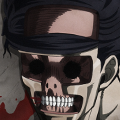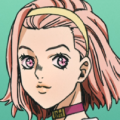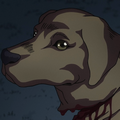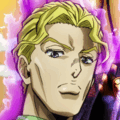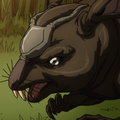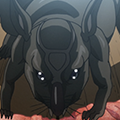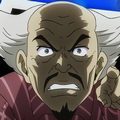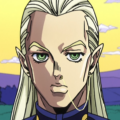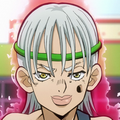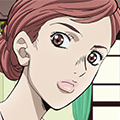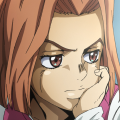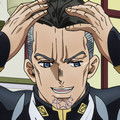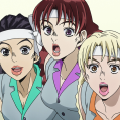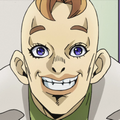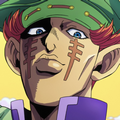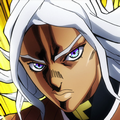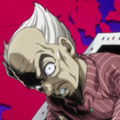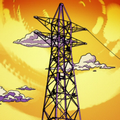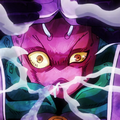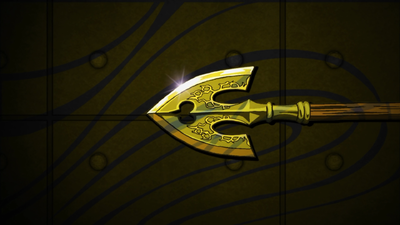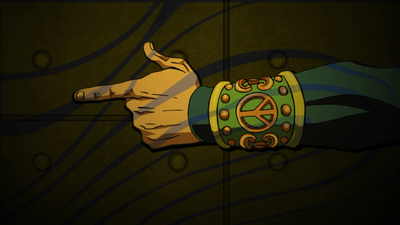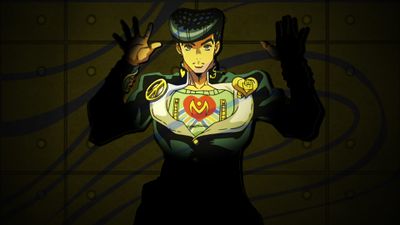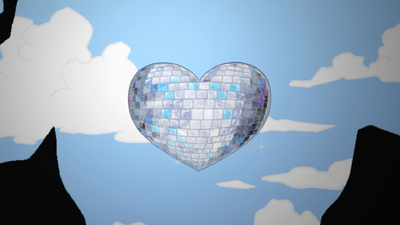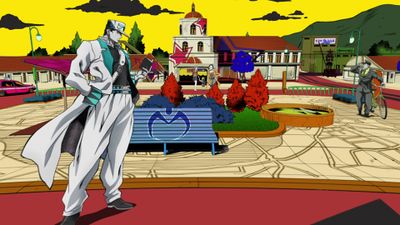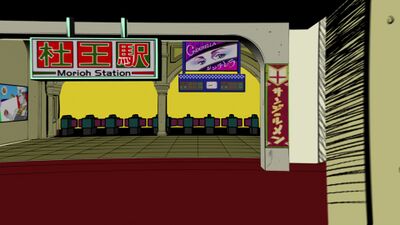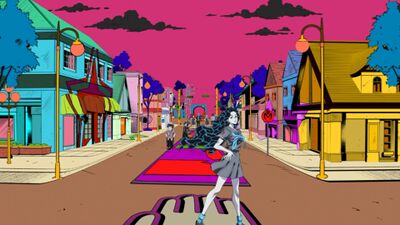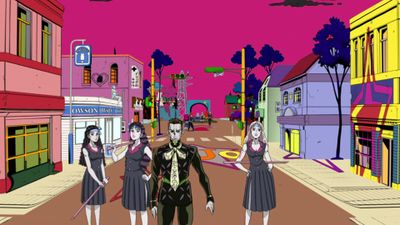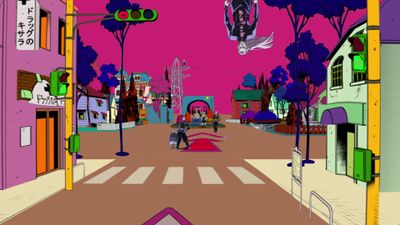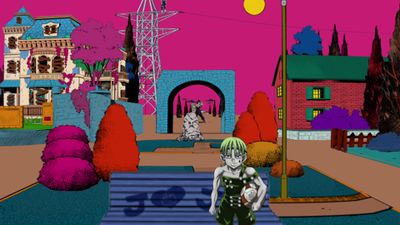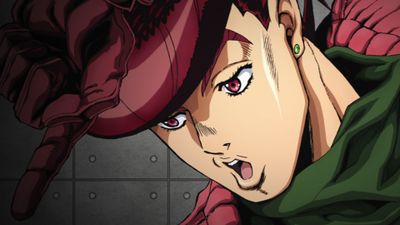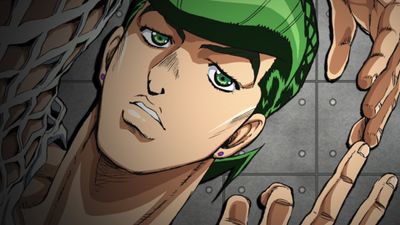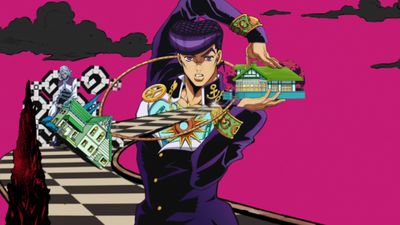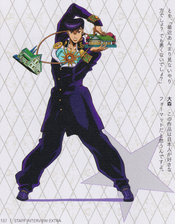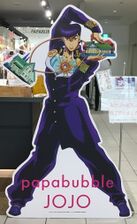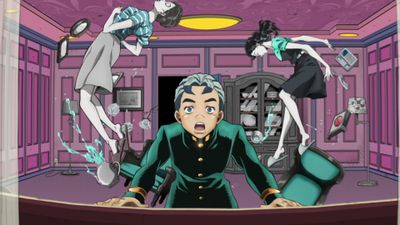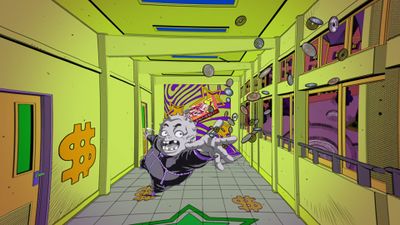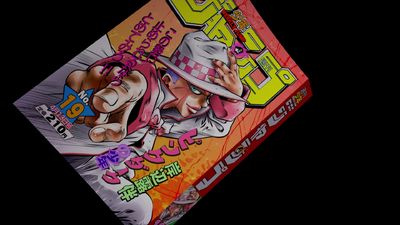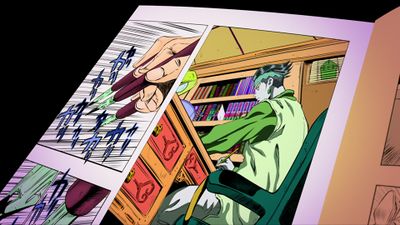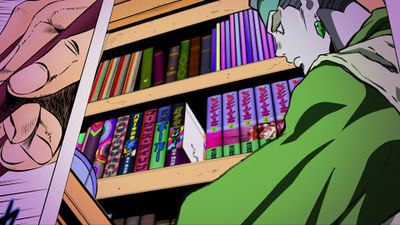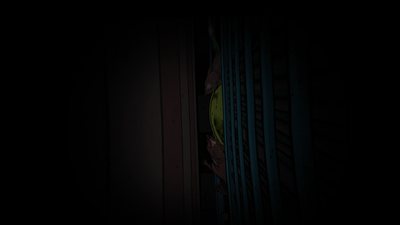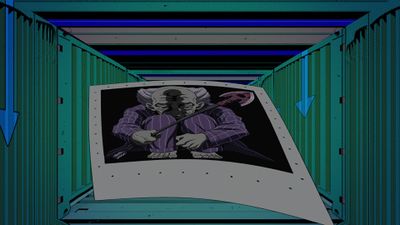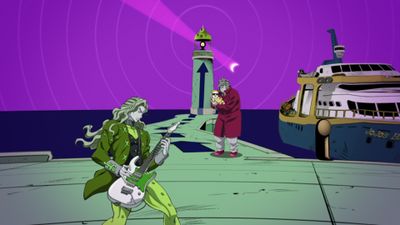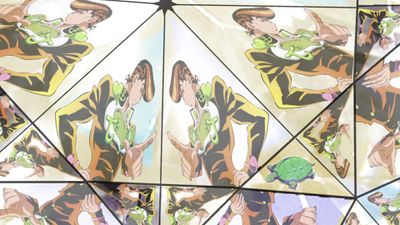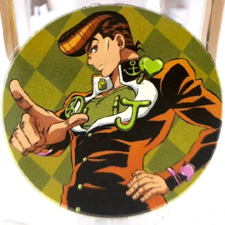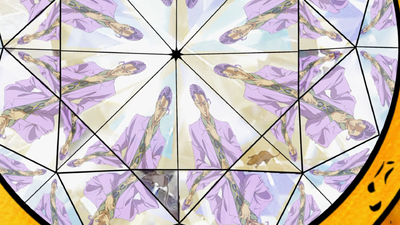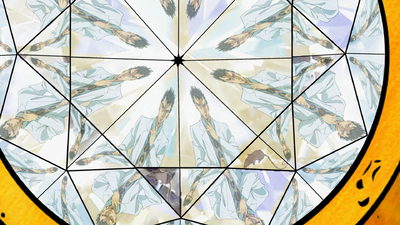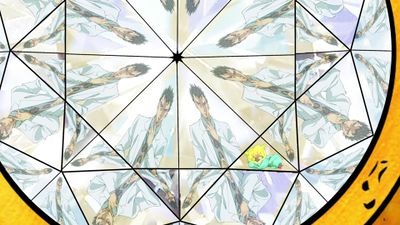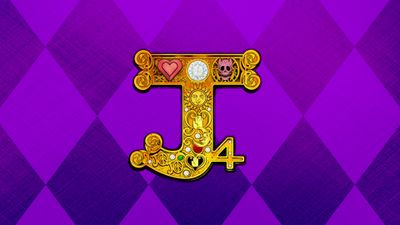I Want You
A limited-edition of Savage Garden's second greatest hits album The Singles was released in Japan on May 25, 2016, to tie in with the anime and has new cover art featuring Josuke Higashikata.
Ending Animation
The scenery continues down a cul-de-sac, with Jotaro, Ryohei, and Tomoko Higashikata all standing around it. The scene then continues into the Morioh Train Station, with an advertisement billboard for the Cinderella Beauty Salon inside. A train passes by, transitioning into Morioh Town Square. The scenery continues down the street, leading past Yukako, Tamami and Hazamada standing in front of Ghost Girl's Alley; along with the shadows of Reimi and Arnold. As the shot further continues down the road, Okuyasu and Keicho Nijimura stand outside the abandoned house they made into their home. The scene then moves past the famous Anjuro Rock and transitions to Josuke, wearing a necklace with two houses attached to it as the road winds and weaves into obscurity.
The scene then cuts quickly to close-up shots of Josuke singing along to the song before zooming into one of the house's windows. Inside the home is a panicked Koichi, along with his mother and his sister behind him suspended in the air, along with broken furniture and flowers. The scenery continues through the home and into a hallway, which is likely the school hallway where Shigechi meets his fate. This fades into a dark tunnel made up of shipping crates with multiple arrows inside. The scenery finally changes to feature a pier and lighthouse, with Joseph's yacht docked outside it. Zooming into the lighthouse's lamp reveals it to be a peace sign, leading into the scenery becoming filled with reflections of Josuke in a diamond, with the turtle he was forced to help in DU Episode 1 being seen in a facet near the bottom-right. The scene then pans out to reveal the diamond being in the center of a large, golden "J"; with a heart on the left and Killer Queen's skull on the right.
Altered versions
TV changes
Starting from Episode 3 an advertisement billboard for the Trattoria Trussardi appears on the wall of the Morioh Train Station.
Starting from Episode 14 onward, during the hallway sequence, a copy of Shonen Jump with Pink Dark Boy on the cover appears out of thin air. The manga opens up to reveal Rohan illustrating some pages as the camera zooms in on his bookshelf, which contains past works from Hirohiko Araki such as Baoh the Visitor and Cool Shock B.T.. For a split second, in a gap between some books, Bug-Eaten can be seen hiding before the camera transitions down the hallway and into the shipping crates as normal. The scenery then changes to the pier and lighthouse, this time featuring Akira Otoishi playing his guitar and Joseph holding Shizuka Joestar in his arms. It is at this point that the TV broadcasts and Blu-ray versions of the anime differ in how the ending changes over the course of Diamond is Unbreakable.
Starting from Episode 18, Shigechi appears before Rohan and the Pink Dark Boy sequence in the school's hallway, foreshadowing his fate. From Episode 19, a figure who appears to be Kosaku Kawajiri can be seen sitting on the bench at the train station. In addition, Reimi and Arnold are seen sitting on the Owson store before Okuyasu and Keicho appear. At the end of the song when Josuke appears in the diamond lighthouse's reflection, he disappears halfway through, only to be replaced by Yoshikage Kira smiling in his trademark suit; additionally, the turtle seen in one facet is replaced by a rat. From Episode 30, Yoshihiro Kira inside Atom Heart Father can be seen flying through the tunnel, and the images of Yoshikage Kira and the rat in the diamond's facets are replaced with "Kosaku" and Stray Cat respectively. The person sitting at the bench has been removed.
In the final version, several more changes are seen: Shinobu and Hayato Kawajiri are seen in front of the train station; several office workers are seen after Tamami and Yoshikage, followed by Yuya Fungami and his groupies. Ken Oyanagi stands in front of the bench and Toyohiro Kanedaichi can be seen in the distance to the left of Josuke, standing on top of his transmission tower.
Blu-ray Changes
Starting from Episode 19, Shigechi appears before Rohan and the Pink Dark Boy sequence in the school's hallway, foreshadowing his fate. A figure who appears to be Kosaku Kawajiri can be seen sitting on the bench at the train station. In addition, Reimi and Arnold are seen sitting on the Owson store before Okuyasu and Keicho appear. At the end of the song when Josuke appears in the diamond lighthouse's reflection, he disappears halfway through, only to be replaced by Yoshikage Kira smiling in his trademark suit; additionally, the turtle seen in one facet is replaced by a rat.
Episode 25 further alters the ending. The person sitting at the bench has been removed, several office workers are seen after Tamami and Yoshikage, and Yoshihiro Kira inside Atom Heart Father can be seen flying through the tunnel. In Episode 28 and after, Mikitaka appears hanging from some traffic lights above the crosswalk and Ken stands in front of the bench.
Finally, starting from Episode 31, the images of Yoshikage Kira and the rat in the diamond's facets have been replaced with "Kosaku" and Stray Cat respectively. Shinobu and Hayato Kawajiri are seen in front of the train station, Yuya Fungami and his groupies now appear on the street with Masazo Kinoto on the right; his back pressed against a tree, and Toyohiro Kanedaichi can be seen in the distance to the left of Josuke, standing on top of his transmission tower. Terunosuke Miyamoto can also be seen on the road behind Josuke, next to Rohan's house.
Appearances
Lyrics
Anytime I need to see your face,
I just close my eyes
And I am taken to a place where
your crystal mind and
Magenta feelings take up shelter
in the base of my spine
Sweet like a chic-a-cherry cola
I don't need to try and explain;
I just hold on tight
And if it happens again, I might move
so slightly
To the arms and the lips and the face
of the human cannonball
That I need to, I want to
Come stand a little bit closer
Breathe in and get a bit higher
You'll never know what hit you
When I get to you
Ooh, I want you
I don't know if I need you
But, ooh, I'd die to find out
Ooh, I want you
I don't know if I need you
But, ooh, I'd die to find out
I'm the kind of person who endorses
a deep commitment
Getting comfy getting perfect
is what I live for
But a look, then a smell of perfume
It's like I'm down on the floor
And I don't know what I'm in for
Conversation has a time and place
In the interaction of a lover and
a mate,
But the time of talking,
using symbols, using words
Can be likened to a deep-sea diver
who is swimming with a raincoat
Come stand a little bit closer
Breathe in and get a bit higher
You'll never know what hit you
When I get to you
Ooh, I want you
I don't know if I need you
But, ooh, I'd die to find out
Ooh, I want you
I don't know if I need you
But, ooh, I'd die to find out
Anytime I need to see your face,
I just close my eyes
And I am taken to a place where
your crystal mind and
Magenta feelings take up shelter
in the base of my spine
Sweet like a chic-a-cherry cola
I don't need to try and explain;
I just hold on tight
And if it happens again, I might move
so slightly
To the arms and the lips and the face
of the human cannonball
That I need to, I want to
Ooh, I want you
I don't know if I need you
But, ooh, I'd die to find out
Ooh, I want you
I don't know if I need you
But, ooh, I'd die to find out
So can we find out?
Ooh, I want you
I don't know if I need you
But, ooh, I'd die to find out
Ooh, I want you
I don't know if I need you
But, ooh, I'd die to find out (verse x2)
Credits
Marie Ino
井野 真理恵
鬼窪 浩久
Gallery
Ending Videos
Full Audio
Trivia
- The symbols on the "J" emblem are icons that define several characters and themes in Diamond is Unbreakable, including: Josuke's heart pin from his jacket, the hand from Jotaro's hat, a diamond, and number "4" referencing the title, and the skull emblem featured on Kira's tie and Killer Queen's belt.
- The second shirt Josuke wears as he sings with the song is based on his clothing from an artwork featured in HIROHIKO ARAKI WORKS.[2]
- As the scene goes down the school hallway towards the end, outside the windows large crop-circles are visible; a reference to Mikitaka Hazekura.
- A sign in the streets of Morioh shows the Part 8 symbol of the town.
- In a tweet, Savage Garden vocalist Darren Hayes was more than happy to license their song for the anime, admiring the JoJo series in general.[3]
- The first showing of the ending in episode 2 is animated differently, with less details and moving through things faster. The newer version was used starting from episode 2 in the Blu-ray versions.
- The band Savage Garden has previously been featured in JoJo's Bizarre Adventure as the namesake of Savage Garden, a pigeon and minor character in Stone Ocean.
- The ending credits' director, Yasufumi Soejima, notes that the visuals were designed to reflect the specific period of his life when Savage Garden would regularly play on MTV or the radio.[4]
